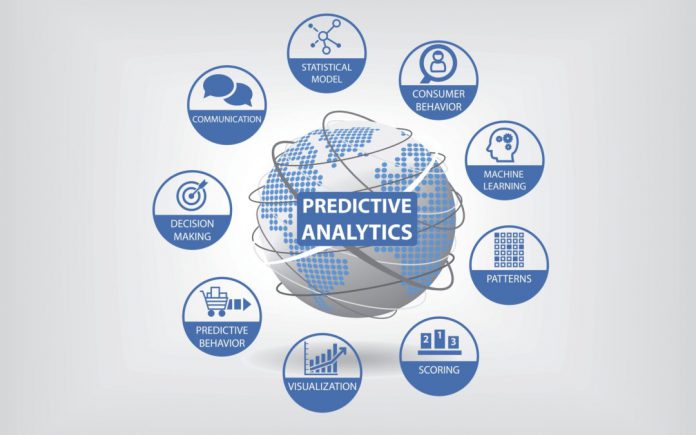In today’s digital era, businesses are increasingly relying on data-driven insights to stay competitive. One powerful tool that has emerged in recent years is predictive analytics, which allows businesses to anticipate customer behavior and make informed decisions.
In the realm of local digital advertising, predictive analytics has proven to be a game-changer, enabling businesses to target their audience more effectively and maximize their advertising ROI.
This article explores the concept of predictive analytics in local digital advertising and its significance in anticipating customer behavior.
What is Predictive Analytics?
Predictive analytics is the practice of extracting information from historical data to identify patterns and trends, enabling businesses to make predictions about future outcomes.
It utilizes various statistical techniques, data mining, and machine learning algorithms to anticipate customer behavior and make data-driven decisions.
How Does Predictive Analytics Work?
Predictive analytics involves several stages, including data collection, data preprocessing, model development, model evaluation, and deployment.
It relies on historical data, such as customer demographics, purchase history, website interactions, and local phone numbers, to create predictive models that can forecast customer behavior.
The Importance of Predictive Analytics in Local Digital Advertising
For businesses engaging in local digital advertising, predictive analytics plays a crucial role in identifying the right target audience, optimizing ad campaigns, and maximizing return on investment (ROI).
By understanding customer behavior patterns, businesses can tailor their advertising strategies to reach the right customers at the right time and with the right message.
The Role of Data in Predictive Analytics
1. Collecting and Processing Data
To effectively leverage predictive analytics in local digital advertising, businesses need to collect relevant data, including customer interactions, purchase history, online behaviors, and local phone numbers.
Data can be collected from various sources, such as websites, mobile apps, social media, and customer relationship management (CRM) systems. The collected data needs to be processed and transformed into a format suitable for analysis.
2. Types of Data Used in Predictive Analytics
Predictive analytics utilizes various types of data, including structured, unstructured, and semi-structured data. Structured data refers to data organized in a tabular format, such as customer demographics and purchase history.
Unstructured data includes text, images, and videos from sources like social media and customer reviews. Semi-structured data combines elements of both structured and unstructured data, such as email communications or online forms.
3. Data Privacy and Ethics Considerations
When working with customer data, businesses must adhere to data privacy regulations and ensure ethical data usage. It is crucial to obtain customer consent, handle data securely, and anonymize personal information, including local phone numbers. Respecting customer privacy builds trust and maintains the integrity of the predictive analytics process.
Predictive Models for Anticipating Customer Behavior
1. Customer Segmentation and Profiling
One of the fundamental applications of predictive analytics is customer segmentation and profiling. By dividing customers into distinct groups based on their behaviors, preferences, and characteristics, businesses can better understand their target audience.
Predictive models help identify patterns within customer segments and create profiles that inform targeted advertising strategies.
2. Predictive Modeling Techniques
Predictive analytics employs various modeling techniques to anticipate customer behavior. These techniques include:
-
Regression Analysis
Regression analysis identifies the relationship between dependent and independent variables, enabling businesses to predict customer behavior based on specific factors. It helps determine how variables like demographics, previous purchases, and local phone numbers impact customer actions.
-
Decision Trees
Decision trees use a tree-like structure to model decisions and their possible consequences. In the context of predictive analytics, decision trees help identify key factors that influence customer behavior and enable businesses to make data-driven decisions.
-
Neural Networks
Neural networks are complex models inspired by the human brain’s functioning. They can uncover intricate patterns in data and make accurate predictions. Neural networks excel in capturing non-linear relationships within data, making them suitable for complex customer behavior prediction.
-
Evaluating Predictive Models
To ensure the accuracy and reliability of predictive models, businesses need to evaluate their performance. Evaluation methods include measuring model accuracy, precision, recall, and the area under the receiver operating characteristic (ROC) curve. Continuous monitoring and refinement of predictive models are essential for maintaining their effectiveness.
Leveraging Predictive Analytics in Local Digital Advertising
1. Targeted Advertising Campaigns
Predictive analytics allows businesses to identify their target audience more accurately. By analyzing customer data, including local phone numbers, businesses can segment their audience based on demographics, behaviors, and preferences.
This segmentation enables targeted advertising campaigns that resonate with specific customer groups, increasing the chances of engagement and conversions.
2. Ad Placement Optimization
Predictive analytics helps businesses determine the most effective platforms and channels for advertising. By analyzing historical data, businesses can identify the platforms that yield the highest engagement and conversions.
Ad placement optimization ensures that local digital advertising efforts are focused on channels where the target audience is most likely to interact.
3. Personalization and Customization
Predictive analytics enables businesses to personalize their advertisements based on customer preferences and behaviors. By tailoring ads to specific customer segments, businesses can create more meaningful and engaging experiences.
Customization involves delivering personalized content, offers, and recommendations to enhance customer engagement and increase conversion rates.
4. Timing and Frequency Optimization
Predictive analytics can determine the optimal timing and frequency of ad delivery. By analyzing customer behavior patterns, businesses can identify the moments when customers are most likely to engage with ads.
Timing and frequency optimization ensure that advertisements are delivered at the right time, reducing ad fatigue and increasing the likelihood of conversions.
Benefits of Predictive Analytics in Local Digital Advertising
1. Improved Ad Targeting and ROI
Predictive analytics enhances ad targeting precision, ensuring that advertisements reach the right audience. By targeting customers based on their behaviors, preferences, and local phone numbers, businesses can optimize their ad spend and maximize return on investment.
2. Enhanced Customer Experience
Predictive analytics enables personalized and relevant ad experiences, enhancing customer satisfaction. By tailoring ads to individual preferences and delivering timely offers, businesses can provide a more seamless and enjoyable customer journey.
3. Competitive Advantage
Businesses that leverage predictive analytics gain a competitive edge by understanding their customers better than their competitors. By anticipating customer behavior, businesses can proactively meet customer needs and outperform rivals in the local digital advertising space.
4. Cost Savings and Efficiency
Predictive analytics minimizes wasted ad spend by directing resources toward the most promising opportunities. By optimizing ad campaigns and targeting, businesses can achieve cost savings and operate with greater efficiency.
Challenges and Considerations
1. Data Quality and Accuracy
To obtain accurate predictions, businesses must ensure the quality and accuracy of their data. Inaccurate or incomplete data can lead to flawed predictions and ineffective advertising strategies. Regular data cleansing, validation, and quality control processes are essential to mitigate this challenge.
2. Interpretation and Validation of Results
Interpreting and validating predictive analytics results require expertise and careful analysis. Businesses must invest in skilled professionals who can interpret the insights generated by predictive models accurately. Additionally, it is crucial to validate the predictions against real-world outcomes to assess the reliability of the models.
3. Balancing Personalization and Privacy
While personalization is essential for effective local digital advertising, businesses must strike a balance between personalization and customer privacy. Respecting data privacy regulations, obtaining appropriate consent, and anonymizing sensitive information, including local phone numbers, are crucial considerations.
4. Skill Set and Resource Requirements
Implementing predictive analytics in local digital advertising requires specialized skills and resources. Businesses may need to invest in data analysts, data scientists, and advanced analytics tools to effectively leverage predictive analytics. Acquiring and maintaining the necessary skills and resources can pose a challenge for some organizations.
Future Trends in Predictive Analytics for Local Digital Advertising
1. Machine Learning and Artificial Intelligence Advancements
Advancements in machine learning and artificial intelligence will enhance the capabilities of predictive analytics in local digital advertising. The integration of deep learning algorithms and natural language processing will enable businesses to extract insights from unstructured data sources, such as social media and customer reviews.
2. Integration with Voice and Visual Search
As voice and visual search technologies continue to evolve, predictive analytics will adapt to these emerging trends. Businesses can leverage predictive analytics to optimize ad targeting and delivery based on voice and visual search behavior, further improving customer engagement and conversions.
3. Cross-Channel Predictive Analytics
The future of predictive analytics lies in cross-channel integration. Businesses will be able to analyze data from multiple channels, such as social media, websites, mobile apps, and offline interactions, to gain a holistic view of customer behavior. Cross-channel predictive analytics will provide more comprehensive insights, enabling businesses to create cohesive and impactful advertising strategies.
4. Ethical Implications and Regulations
As predictive analytics advances, ethical implications and regulations surrounding data privacy and usage will continue to evolve. Businesses must stay informed about legal requirements and adhere to ethical standards to maintain customer trust and comply with emerging regulations.
Conclusion
Predictive analytics is transforming local digital advertising by enabling businesses to anticipate customer behavior and make data-driven decisions. By leveraging historical data, businesses can create predictive models that optimize ad targeting, placement, and personalization.
However, challenges related to data quality, interpretation of results, privacy considerations, and resource requirements must be addressed.
As technology progresses, future trends in predictive analytics will further enhance its capabilities, providing businesses with more sophisticated tools to drive success in the local digital advertising landscape. By harnessing the power of predictive analytics, businesses can gain a competitive edge, deliver exceptional customer experiences, and maximize their advertising ROI.



